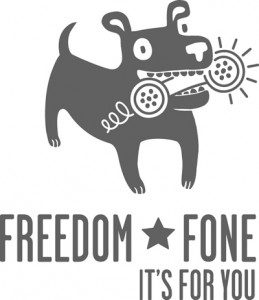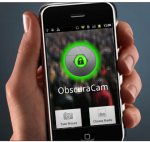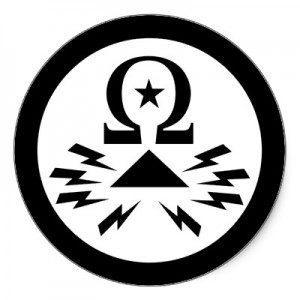Innovation nominees
Recognising innovation and original use of new technology to circumvent censorship and foster debate, argument or dissent
Freedom Fone by Kubatana, mobile phone technology NGO, Zimbabwe
Kubatana is an NGO based in Harare that uses a variety of new and traditional media to encourage ordinary Zimbabweans to be informed, inspired and active about civic and human rights issues. As an organisation, it continuously seeks innovative fixes to the challenges of sharing independent information in Zimbabwe’s restrictive media environment. Freedom Fone is one of Kubatana’s solutions. An open-source software, Freedom Fone helps organisations create interactive voice response (IVR) menus to enable them to share pre-recorded audio information in any language via mobile phones and landlines with their members or the general public. The software is aimed at organisations or individuals wishing to set up interactive information services for users where the free flow of information may be denied for economic, political, technological or other reasons. Freedom Fone is one of the many ways Kubatana reaches across the digital divide to inform and inspire the vast majority of Zimbabweans who do not have regular or affordable internet access.
ObscuraCam, smartphone app, USA
 ObscuraCam is a free smartphone application that uses facial recognition to blur individual faces automatically. Developed by WITNESS and the Guardian Project, it enables users to protect their personal security, privacy and anonymity. In 2011 and 2012, uprisings throughout the Middle East have shown the power and danger of mobile video footage. ObscuraCam helps protect activists who fear reprisals but want to safely capture evidence of state brutality. Launched in June 2011 and based in the USA, ObscuraCam is the only facial blurring or masking application that has responded to the concerns of human rights groups, citizen activists and journalists. In addition to obscuring faces, the application removes identifying data such as GPS location data and the phone make and model.
ObscuraCam is a free smartphone application that uses facial recognition to blur individual faces automatically. Developed by WITNESS and the Guardian Project, it enables users to protect their personal security, privacy and anonymity. In 2011 and 2012, uprisings throughout the Middle East have shown the power and danger of mobile video footage. ObscuraCam helps protect activists who fear reprisals but want to safely capture evidence of state brutality. Launched in June 2011 and based in the USA, ObscuraCam is the only facial blurring or masking application that has responded to the concerns of human rights groups, citizen activists and journalists. In addition to obscuring faces, the application removes identifying data such as GPS location data and the phone make and model.
Visualizing.org, data visualisation resource, international
Visualizing.org was created to help make data visualisation more accessible to the general public. It calls itself “a community of creative people making sense of complex issues through data and design… and a shared space and free resource to help you achieve this goal”.Data analysts and graphic designers have set themselves the challenge of sharing a constantly proliferating body of public data in an accessible form. Raw data on its own might as well be censored; visualisation opens the door to open information that otherwise would be left languishing on hard disks or, if downloaded, unintelligible to the average citizen. The project offers a place to showcase work, discover remarkable visualisations and visually explore some of today’s most pressing global issues. Created by GE and Seed Media Group, Visualizing.org promotes information literacy. The portal has had a remarkable year.
Telecomix, internet activists, across Europe
 Telecomix is the collective name for a decentralised group of internet activists operating in Europe. Their focus is to expose threats to freedom of speech online. During one operation, Telecomix activists published a huge package of data which proved that the Syrian government was carrying out mass surveillance of thousands of its citizens’ internet usage. Telecomix’s revelation that the technology used was supplied by US firm Blue Coat Systems has prompted serious investigations into the involvement of western technology firms in helping repressive regimes spy on their people. In mid-August 2011, Telecomix’s dispersed group of hackers came together to target Syria’s internet. Those attempting to access the internet though their normal browsers were confronted with a blank page bearing a warning: “This is a deliberate, temporary internet breakdown. Please read carefully and spread the following message. Your internet activity is monitored.” Following this, a page flashed up describing how to take precautions to encrypt usage.
Telecomix is the collective name for a decentralised group of internet activists operating in Europe. Their focus is to expose threats to freedom of speech online. During one operation, Telecomix activists published a huge package of data which proved that the Syrian government was carrying out mass surveillance of thousands of its citizens’ internet usage. Telecomix’s revelation that the technology used was supplied by US firm Blue Coat Systems has prompted serious investigations into the involvement of western technology firms in helping repressive regimes spy on their people. In mid-August 2011, Telecomix’s dispersed group of hackers came together to target Syria’s internet. Those attempting to access the internet though their normal browsers were confronted with a blank page bearing a warning: “This is a deliberate, temporary internet breakdown. Please read carefully and spread the following message. Your internet activity is monitored.” Following this, a page flashed up describing how to take precautions to encrypt usage.


